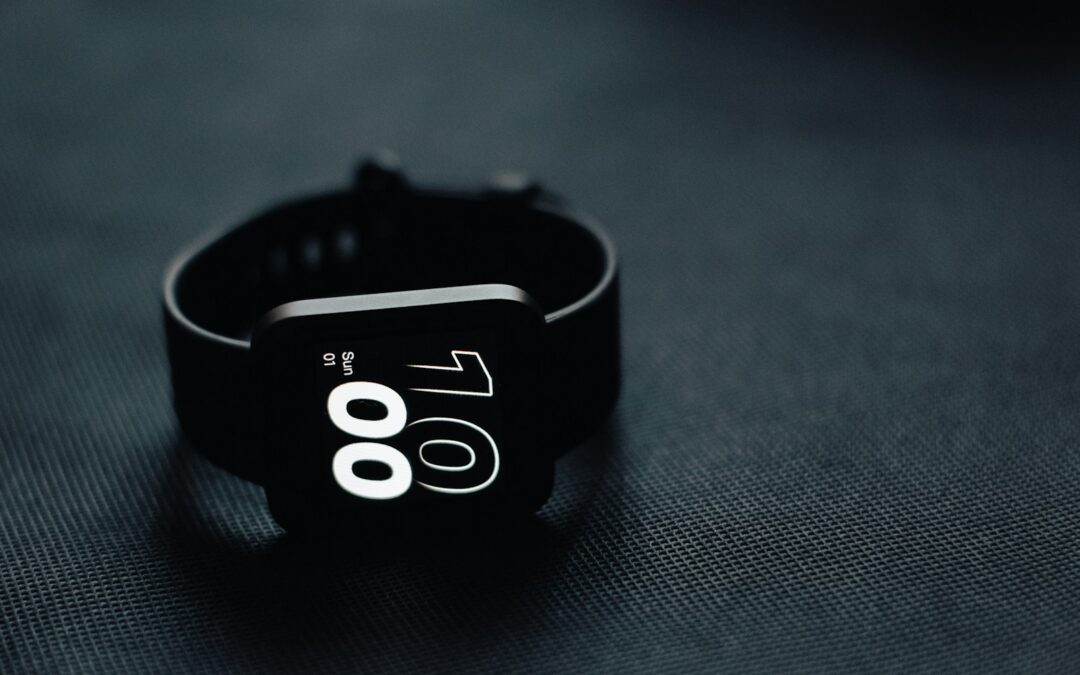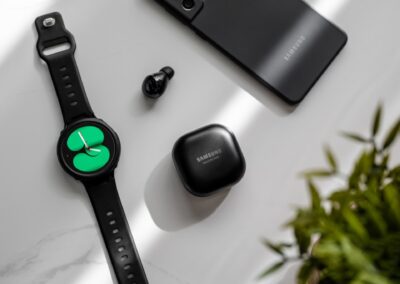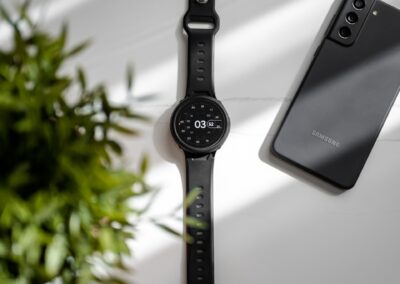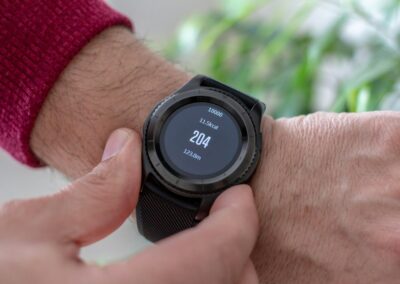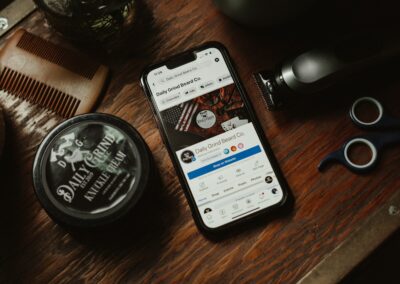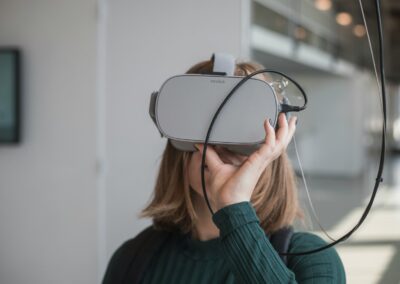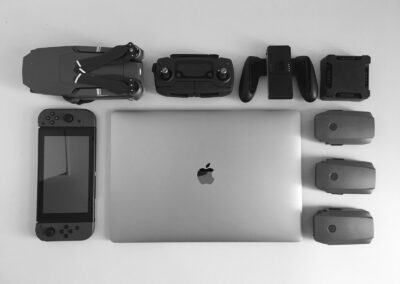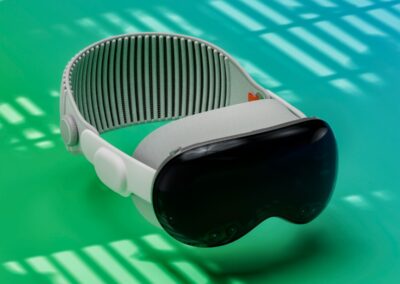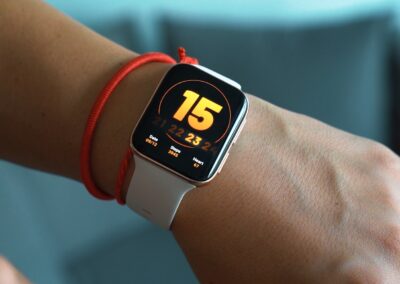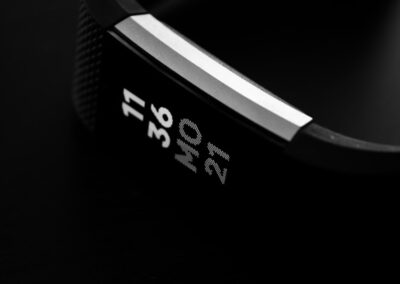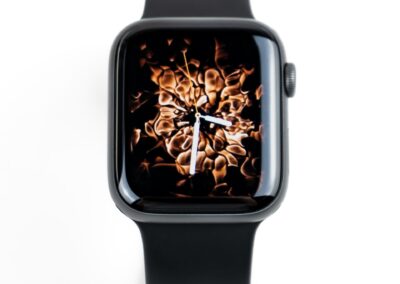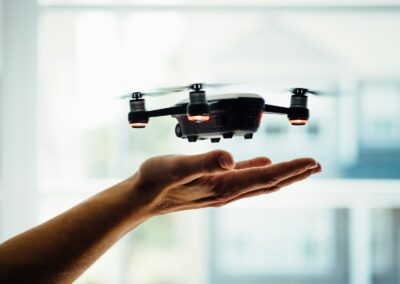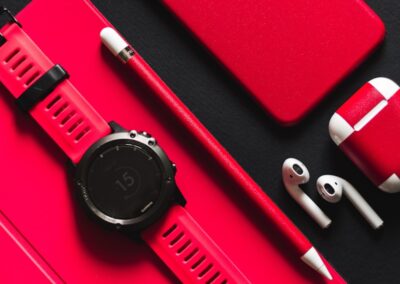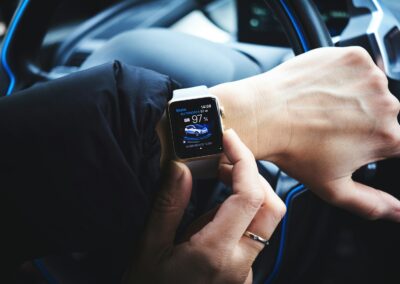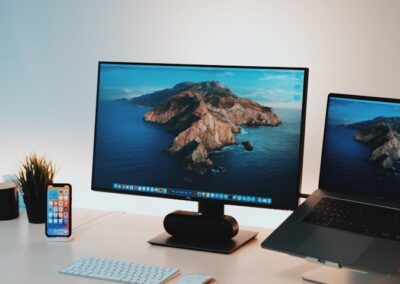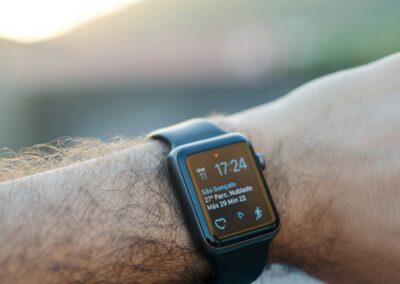The Rise of Wearable Sensory Enhancement Technology
Understanding the Potential of Wearable Sensory Devices
Wearable sensory enhancement devices are revolutionizing how individuals interact with their environments. These devices, which include smart glasses, hearing aids, and haptic feedback systems, are designed to enhance human sensory capabilities. By leveraging advanced technologies like artificial intelligence (AI) and machine learning, these devices can provide real-time adjustments and feedback, thereby improving the user’s experience and functionality.
In regions like Saudi Arabia and the UAE, where technological innovation is at the forefront, the adoption of wearable sensory devices is gaining traction. Cities such as Riyadh and Dubai are leading the way in integrating modern technology into everyday life, offering a glimpse into the future of personalized wearable technology. These advancements are not only enhancing the quality of life for individuals with sensory impairments but also providing new ways for people to interact with the digital world.
The primary goal of these devices is to tailor sensory experiences to individual needs. For instance, smart glasses can enhance visual perception by adjusting brightness and contrast based on the user’s environment, while hearing aids can filter out background noise to improve sound clarity. This personalization is crucial for ensuring that the devices meet the unique requirements of each user, thereby maximizing their effectiveness and usability.
Artificial Intelligence and Personalization
Artificial intelligence plays a pivotal role in the personalization of wearable sensory enhancement devices. AI algorithms analyze data from the user’s interactions with the device to learn their preferences and habits. This data-driven approach allows the device to make intelligent adjustments that enhance the user’s sensory experience. For example, a wearable device equipped with AI can adjust its settings in real-time based on the user’s location, activity, and environmental conditions.
Generative AI, a subset of AI that focuses on generating new content based on learned patterns, is also being integrated into wearable sensory devices. This technology can create personalized sensory experiences by generating visual or auditory stimuli tailored to the user’s preferences. For instance, generative AI can create customized soundscapes that help users concentrate or relax, depending on their needs at any given moment.
In the context of Saudi Arabia and the UAE, the integration of AI into wearable sensory devices aligns with the region’s commitment to innovation and technological advancement. These countries are investing heavily in AI research and development, creating an environment conducive to the growth and adoption of cutting-edge technologies. As a result, users in Riyadh and Dubai can benefit from the latest advancements in AI-powered personalization.
Blockchain and Data Security
The personalization of wearable sensory enhancement devices requires the collection and analysis of large amounts of user data. Ensuring the security and privacy of this data is paramount, and this is where blockchain technology comes into play. Blockchain provides a secure and transparent way to store and manage user data, ensuring that it is only accessible to authorized parties.
By leveraging blockchain technology, wearable sensory devices can offer enhanced data security and privacy protections. This is particularly important in the UAE and Saudi Arabia, where data privacy regulations are becoming increasingly stringent. Blockchain’s decentralized nature ensures that user data is protected from unauthorized access and tampering, thereby fostering trust between users and technology providers.
Moreover, blockchain can facilitate the seamless integration of wearable sensory devices with other digital services. For example, users can securely share their sensory data with healthcare providers, who can then use this information to offer personalized medical advice and treatment. This interoperability enhances the overall user experience and provides additional value by connecting wearable devices to a broader ecosystem of digital services.
Applications and Benefits of Personalized Wearable Sensory Devices
Enhancing Accessibility and Inclusion
Personalized wearable sensory devices have the potential to significantly enhance accessibility and inclusion for individuals with sensory impairments. By tailoring sensory experiences to the unique needs of each user, these devices can provide a level of functionality that was previously unattainable. For instance, smart glasses can enhance visual acuity for individuals with vision impairments, while hearing aids can improve sound quality for those with hearing loss.
In Saudi Arabia and the UAE, where there is a strong focus on social inclusion and accessibility, wearable sensory devices are helping to bridge the gap between individuals with sensory impairments and the broader community. By enabling these individuals to participate more fully in daily activities, these devices are fostering a more inclusive society. This is particularly important in cities like Riyadh and Dubai, where technological innovation is being used to improve the quality of life for all residents.
Moreover, personalized wearable sensory devices can enhance educational and employment opportunities for individuals with sensory impairments. By providing tailored sensory experiences, these devices can help users overcome barriers to learning and productivity, thereby enabling them to achieve their full potential. This, in turn, contributes to the overall economic and social development of the region.
Boosting Business Success and Productivity
In the business world, personalized wearable sensory devices can boost productivity and efficiency. For instance, wearable devices that enhance sensory perception can improve communication and collaboration among team members. This is particularly relevant in fast-paced environments like construction sites and manufacturing plants, where clear communication is essential for ensuring safety and efficiency.
In the context of leadership and management, wearable sensory devices can provide executives with real-time data and insights that inform decision-making. For example, a wearable device that monitors environmental conditions can provide feedback on optimal lighting and sound levels, thereby enhancing the comfort and productivity of employees. This data-driven approach to workplace management aligns with the principles of executive coaching services, which emphasize the importance of personalized and informed leadership.
Additionally, wearable sensory devices can support project management by providing real-time feedback on the progress and performance of tasks. By enhancing the sensory experiences of workers, these devices can improve accuracy and efficiency, thereby ensuring that projects are completed on time and within budget. This is particularly relevant in regions like the UAE and Saudi Arabia, where large-scale infrastructure projects are driving economic growth and development.
The Future of Wearable Sensory Enhancement Devices
The future of wearable sensory enhancement devices is bright, with continued advancements in AI, blockchain, and other technologies driving innovation and personalization. As these devices become more sophisticated, they will offer increasingly personalized and immersive sensory experiences, further enhancing their utility and impact.
In Saudi Arabia and the UAE, the commitment to technological innovation and development will continue to support the growth and adoption of wearable sensory devices. By fostering a culture of innovation and investing in cutting-edge research, these countries are positioning themselves at the forefront of the wearable technology revolution. This, in turn, will provide significant benefits for individuals, businesses, and society as a whole.
In conclusion, wearable sensory enhancement devices represent a significant advancement in technology, offering personalized solutions that enhance sensory experiences and improve quality of life. By leveraging AI, blockchain, and other technologies, these devices can meet the unique needs of each user, providing valuable benefits in various contexts. As the adoption of wearable sensory devices continues to grow, they will play an increasingly important role in shaping the future of technology and society.
#WearableTechnology #SensoryDevices #Personalization #AIinWearables #Blockchain #UAE #SaudiArabia #Riyadh #Dubai #BusinessSuccess #LeadershipSkills #ProjectManagement

